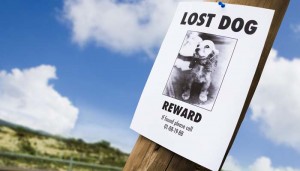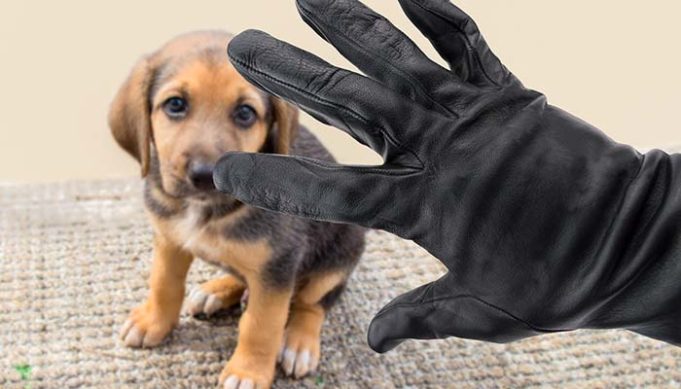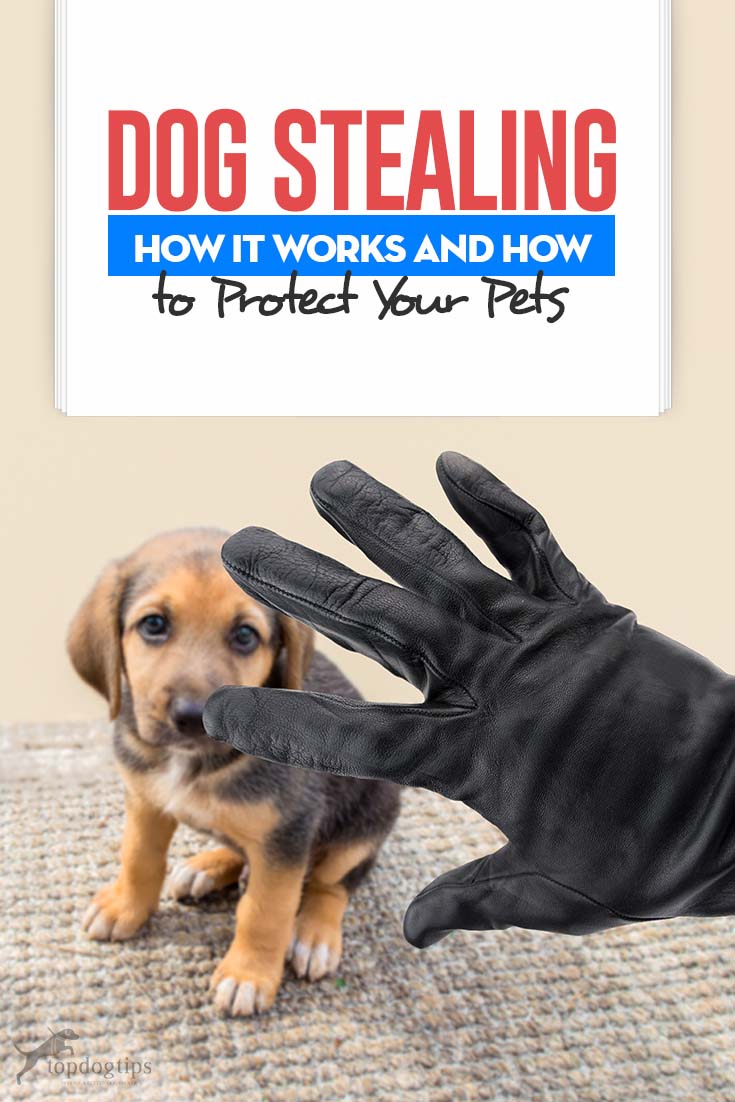On average, the number of dogs stolen each year is around 2 million, and dog theft is not a small problem in the United States. With the value of a dog being determined by breed and size to those on the search to make quick cash, every dog is at risk to be taken from their owners.
As pet ownership grows and dogs become “more valuable,” dog stealing has become a type of popular crime of its own, and it has been growing steadily. Pet thieves often only target purebred dogs, as a particular breed may be able to bring in thousands of dollars, but other dogs may be targeted as well because they are misidentified by the thief, or because thieves are looking for dogs for another reason, like bait for dog fights. Here's what you must know about dog stealing to protect yourself and your pets.
ALSO READ: The Business of Dog Smuggling and How It Works
How Are Dogs Stolen?
 Dog thieves are experts at identifying the perfect opportunity to steal dogs. Typically, they wait for an opening when the owners are distracted, or owners leave their dogs to explore on their own. They use the opportunity to come and snatch the pup before the owner notices, quickly making their way towards a car/van and then away from the place at which the theft took place.
Dog thieves are experts at identifying the perfect opportunity to steal dogs. Typically, they wait for an opening when the owners are distracted, or owners leave their dogs to explore on their own. They use the opportunity to come and snatch the pup before the owner notices, quickly making their way towards a car/van and then away from the place at which the theft took place.
Dogs are frequently stolen out of the backyard of their owners, as they are usually left to their own devices when allowed outside. In an area where houses are far apart (and particularly when there's Neighborhood Watch), this is not much of a risk, but in a busy neighborhood where people don't pay much attention, the dog is quickly taken. Similar to how robbers work homes, the dognapper takes time to scope the area and check the daily routines of the owners before making their move and taking the dog.
Why Are Dogs Stolen?
Dogs may be stolen for a variety of reasons, and of course the most common causes are linked to dogs that are likely to bring in the most money – specific breeds of purebred dogs.
Breed is the number one reason why dogs are kidnapped. The purity of these dogs has a high street value for sale and they're often very easily stolen. Most purebred dogs that are stolen will be of smaller size – puppies or toy breeds. Because of their small size, they are easier for the thief to take without attracting unwanted attention or getting bitten. Owners of medium to large breeds have much less to worry about in comparison to owners of small dogs, because it's not as simple for a dog thief to steal a German Shepherd Dog or a Mastiff breed without putting their life in serious danger, but that's not to say these breeds never get stolen.
After the crime has been committed, petty thieves have several options. They may wait for the owner to post “Found Dog” rewards and then they will then return the dog to their owner and collect the sizable award from the unknowing owners. These dogs are often sold to the brokers at flea markets, Facebook pages, Craigslist and newspaper adds.
Dog thieves may have stolen dogs on “special order” or simply prep the dog for sale (online or offline) as a purebred dog for future owners. Stolen dogs are also often transferred out of city, state and even country, and dog smuggling has become a huge business.
Finally, dogs may also be taken as “bait dogs” to train fighting dogs. All sizes of dogs are stolen for this purpose, and larger, aggressive dog breeds are not an exception because they make for good opponents in dog fighting. Most often targeted medium size breeds include German Shepherds, Doberman Pinschers and American Pitbulls.
Not as common, but also not unheard of, are dogs that may be stolen and sold for research or at veterinary institutions that use them for testing and experimentation, such as is the history of the Beagle breed. This is prevalent only in certain areas and is not the main attraction of dog stealing in most places; it's especially rare in the United States.
How to Prevent Dog Theft
There are many ways of avoiding dog theft and protecting your pets from potential thieves in the area. Here are six simple tips to avoid having your dog stolen:
1. Know where your dog is. Keeping an eye on your dog at all times when at a dog park, in the backyard or whenever you’re out with your pup can prevent potential dog stealing. This includes keeping your pooch indoors when you are not home and keeping them on a leash or harness when out for a walk.
2. Properly identify your dog. Make sure that your dog has an up-to-date ID tag and license on their collar. Additionally, experts suggest to always, always have your dog microchipped so that if they are found, they can be quickly returned to you without the risk of misidentification and being handed over to the wrong person.
3. Use pet trackers. You probably don't need these when you're simply out for a brief walk in your neighborhood, but whenever you go out into uncharted territories, leave your dog outside in an open area for longer and so forth, it's best to have any type of pet tracker or a GPS dog collar on him. While these can be removed by the thief, you're likely to spot something being off much sooner and take action.
4. Remain quiet about your dog’s breed. Thieves are attracted to the value of dogs based on the breed, and they may be uninformed about the value of a dog until it is mentioned. Avoid bragging about what breed your dog is to strangers, and how much you may have paid for them as it can attract dog thieves.
5. Change your routine and keep it quiet. Dog stealing is often planned, especially when the target is high-value. A dog thief is likely to track your daily habits with your pooch and take them when you are preoccupied. If you hear or read about dogs stolen near or around where you live, changing your routine can confuse the thief and potentially drop your dog as a target in case they were watching you.
6. Spay or neuter your dog. If the thief is looking for dogs to sell to research or veterinary centers, or to illegal breeders where they use the dog to “produce” more pups for sale, a fixed dog is a turn-off. Most companies, labs and illegal breeders will not accept a spayed or neutered dog. While dog thieves may not always know whether your pup is or isn't fixed, some of those who do their research or hear about your pet from reliable sources, will know that it's not a worthy target.
Not only is protecting the dog from theft is a serious concern for pet owners, but simply protecting dogs themselves in general should be one, too. So, avoid giving a dog away for free, always ask for adoption or rehoming fee even if it is only $25 and make sure you know where the dog is going.
If you come across a dog that you believe is lost, do request proof of ownership before returning them to their supposed owner. Dog thieves are often on the lookout for “Dog Found” ads, where they can pretend to be the owner. Be aware of those in the neighborhood, sudden strangers, and disappearing animals are a sure sign that an animal scam is targeting your community.
What To Do If Your Dog Is Stolen
Immediate action is the best action. Call the local police or/and animal control to file a report. Be persistent and check up with them frequently; missing dog cases can easily be pushed to the side and they often will be. Begin checking sites of local adoption centers, breeders, Craigslist and other places where dogs may be sold or posted for “adoption.”
 Follow the “Missing Dog Procedure“. Make a flyer with your dog’s name, markings, color, photo, and breed along with where your dog was last seen and a contact number. Adding that your dog needs medical attention can elicit a quicker response from neighbors while also deterring a thief from keeping the dog.
Follow the “Missing Dog Procedure“. Make a flyer with your dog’s name, markings, color, photo, and breed along with where your dog was last seen and a contact number. Adding that your dog needs medical attention can elicit a quicker response from neighbors while also deterring a thief from keeping the dog.
Post the flyers at the local shelter and community boards, as well as throughout the neighborhood. Check up frequently on these locations to make sure that the flyer has not been removed. A digital copy of the flyer or something similar should be posted on social media on your pages and local lost dog pages. Monitor sale ads in the newspaper and on craigslist for pictures or possible mentions of your dog.
Walk the area frequently. Try different hours of the day to prevent noise intervention and to increase the likeliness of your dog hearing, smelling or seeing you. Your pooch may have been stolen by someone that lives nearby. If you believe you have identified the person who may have stolen your dog, contact the police. Do NOT approach and confront them as they may relocate or remove your dog from the area before you are able to get to them, or they may simply be dangerous. If someone claims to have found your dog and you are offering a reward, ask questions about the identity of the dog to make sure that they are yours.
READ NEXT: Dog Stolen From Front Yard Makes It Back Home














